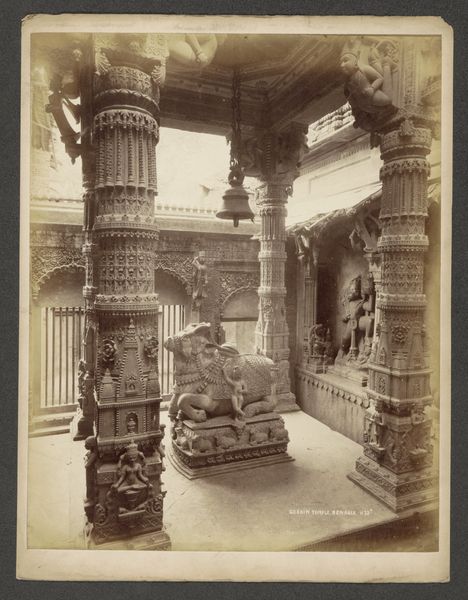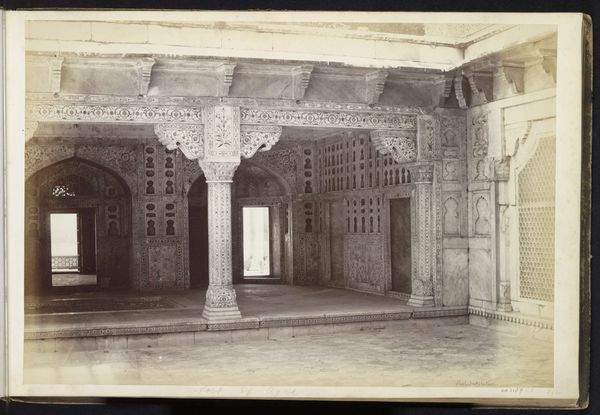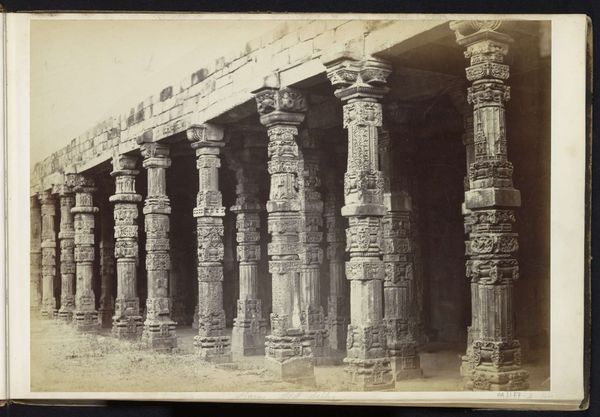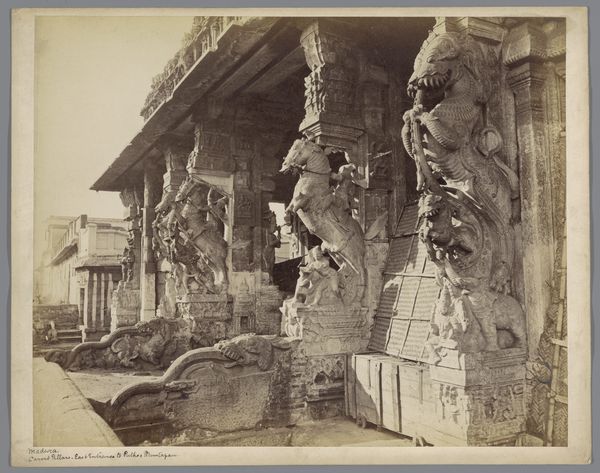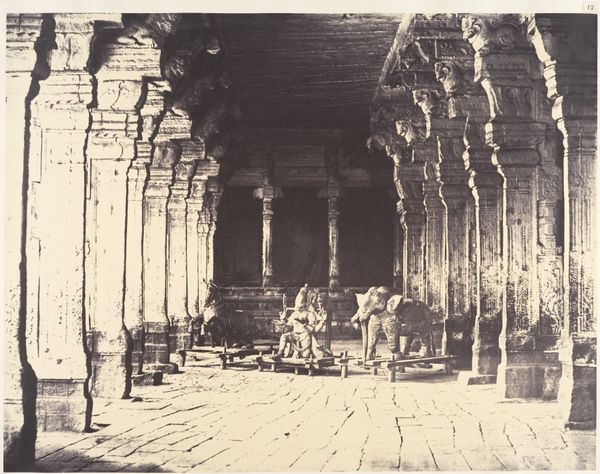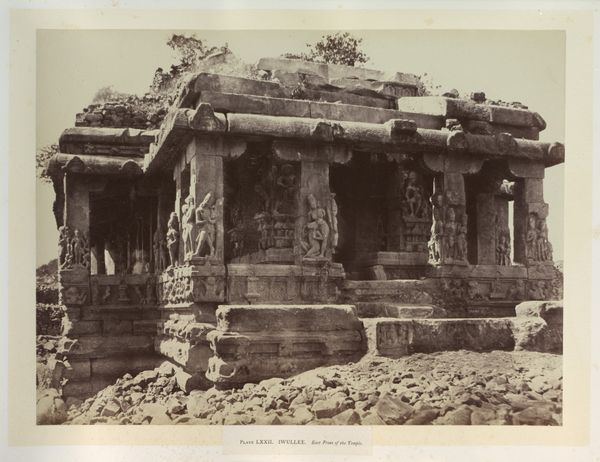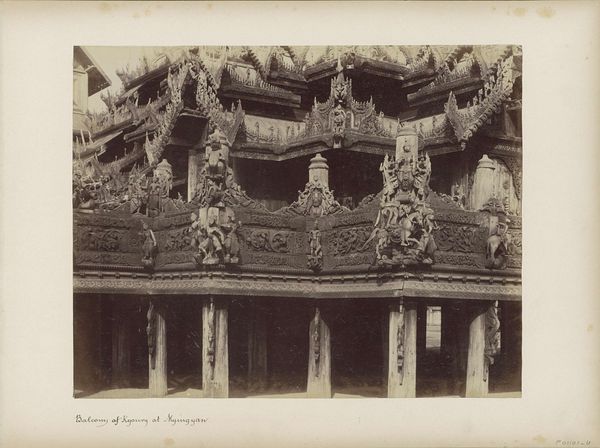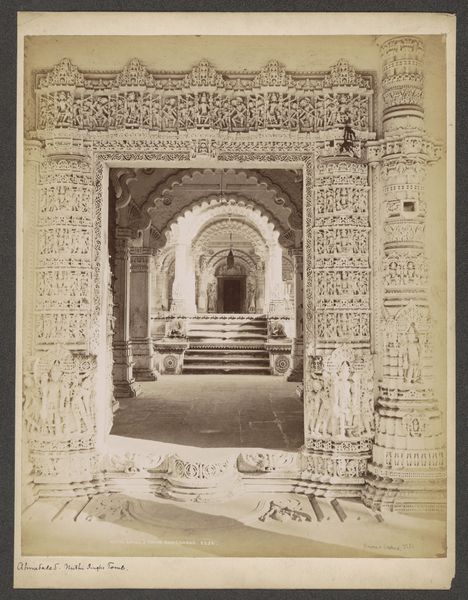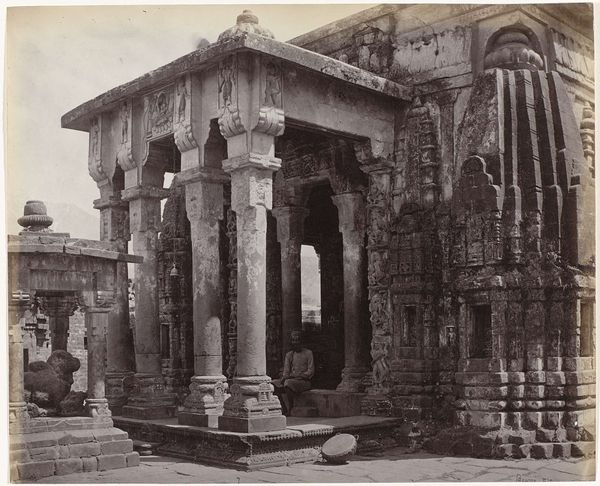
Vrouwen met waterkannen op de trappen van de waterput van Adalaj, India 1872 - 1873
0:00
0:00
print, photography
# print
#
sculpture
#
landscape
#
photography
#
ancient-mediterranean
#
column
#
cityscape
#
islamic-art
Dimensions: height 220 mm, width 282 mm, height 239 mm, width 316 mm
Copyright: Rijks Museum: Open Domain
Curator: Let's turn our attention to this captivating print titled "Vrouwen met waterkannen op de trappen van de waterput van Adalaj, India," created sometime between 1872 and 1873. The English translation being Women with water jugs on the stairs of the Adalaj well in India. Editor: My first impression is of immense, layered architecture. It feels heavy, almost oppressive in its grandeur, yet the human figures soften that significantly. Curator: Indeed. This image presents a fascinating intersection of social practice and architectural form. The Adalaj stepwell served not just as a water source but also a gathering place, especially for women. The print gives a visual account of daily rituals. Editor: It makes you wonder about the labor involved. Consider the craft embedded in this stone. Someone had to extract the materials, shape them, transport them. The photograph only shows the tail end of labor! I also wonder about the photographer’s own relationship to their material. Was the photograph an objective record or did they direct their subject? Curator: These stepwells also represented a sophisticated water management system, crucially important in the arid climate of Gujarat. Their construction and maintenance had significant social implications, often involving complex networks of patronage and community involvement. And there is definitely the question of how photography served a colonial gaze at the time. Editor: The repetitive patterns and carvings are beautiful, but also incredibly labour intensive to execute. These women carrying water on their heads highlight that intersection of necessity and aesthetic value. This photo really asks us to think about what has lasting worth. Is it access to water, community participation or intricate, delicate stone work? Curator: It also touches on the role of women in public life, their labor often invisible yet crucial for the well-being of their communities. How often are the quotidian actions of everyday people centered? Editor: Seeing the patterns and considering labor brings such a complex appreciation to this print! Curator: Absolutely, by considering the architecture of social spaces like this, we see how they were integral to everyday lives and reflect larger historical forces.
Comments
No comments
Be the first to comment and join the conversation on the ultimate creative platform.
